
 The Mysterious Affair at Olivetti: IBM, the CIA, and the Cold War Conspiracy to Shut down Production of the World’s First Desktop Computer
The Mysterious Affair at Olivetti: IBM, the CIA, and the Cold War Conspiracy to Shut down Production of the World’s First Desktop Computer
By Meryle Secrest
Publisher: Alfred A. Knopf
Recommended by Hélène B. Ducros
Meryle Secrest’s latest biography is that of a company. People who were already typing in the twentieth century might be familiar with the Olivetti brand and its machines’ famous eponym “touch.” The Mysterious Affair at Olivetti traces the captivating saga of the Olivetti family since Camillo Olivetti founded the brand at the turn of last century and opened the first typewriter factory in the small town of Ivrea in Italy’s Piemonte. Secrest takes readers through the life of the firm’s main visionary characters, among them family strongmen Camillo, Adriano, and Roberto Olivetti, who delivered a succession of technological and aesthetic prowesses from the first typewriter to the M1 and the Programma 101 in the late 1960s―the latter considered to be the world’s first personal computer.
In this semi-fictional work, Secrest advances an intriguing thesis to explain the demise of this thriving business, which had successfully survived two devastating world wars. Intimating a deliberate conspiracy to erase Olivetti as competition in the world of emerging computer technology in the context of the Cold War, she also indirectly addresses the historical confrontation between divergent societal ideals and industrial models. Beyond the partly imagined scenario, the book also renders the story of market and legal wars between the US and Italy over communication technologies. Passed the industrial espionage thread, the book certainly also casts light on an important European industrial family. The Olivettis have left their imprint on Piemonte to this day, in particular through Adriano’s progressive, pro-European, and humanistic vision of socio-industrial culture, which allied technological innovation with urban development considerations and utopic social ideals―a vision the world has paid tribute to as the ideal città industriale he conceived in Ivrea was added to UNESCO’s 2018 World Heritage list. Indeed, the legacy of the Olivetti clan engages readers in a reflection on twentieth century utopian working societies and the intersection of design and architectural revolutions, engineering experimentation, global-scale politics, and cultures of industrial production that can only resonate with contemporary thinking about the domination of certain company leaders, brands, and world regions in the technology sector.
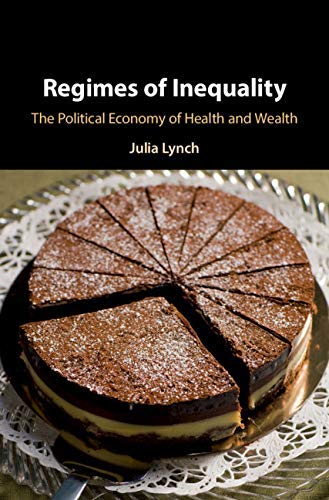 Regimes of Inequality: The Political Economy of Health and Wealth
Regimes of Inequality: The Political Economy of Health and Wealth
By Julia Lynch
Publisher: Cambridge University Press
Recommended by Mark I. Vail
At a time when social and economic inequality has become perhaps the central policy concern across the advanced industrial world, the tools deployed by social scientists to study the phenomenon, often cast in terms of income or wealth or other proxies, are often inadequate to the task. Such approaches remind one of the parable of the blind men and the elephant, of which each of them touches a part that he then erroneously assumes to be characteristic of the whole. Julia Lynch’s path-breaking new book does not make this mistake. In her meticulously researched and eloquently written study, Lynch analyzes the sources of social and economic inequality in France, Britain, and Finland, countries chosen as representatives of the conventional categories of Christian Democratic, Liberal, and Social Democratic welfare states, respectively. Not content with simply calling such categories into question, Lynch argues that we must reframe our understanding of inequality itself, going beyond such traditional measures as income and wealth to a framework that ties social and economic inequities to inequalities in health, which becomes both an indicator of and proxy for deep, structural imbalances in socio-economic groups’ life chances.
In this story, Lynch places her focus squarely on politics and political choice, demolishing the myth that inequalities are the products of inexorable forces such as technological change or individual fecklessness or irresponsibility. She argues instead that the establishment of neoliberalism as a quasi-hegemonic ideological construct after the 1970s undermined “upstream” policy initiatives, such as needed but costly investments in education, child care, and other social services, that help combat inequalities at their source. She contends that national variation in policy responses to rising inequality can best be understood as responses to neoliberalism and its attendant myth of atomized, autonomous individuals, with the center-Left parties that might be expected to contest such a view increasingly abdicating in the face of it. In Lynch’s account, structural factors such as class are powerful sources of inequalities of health and wealth, but they also offer politically expedient ways for policy makers and the business elites to whom they principally answer to dismiss, sotto voce, costly policy solutions as either unfeasible or likely ineffective. The result is persistent national “regimes of inequality” that, each in its own distinctive but depressingly similar way, place beyond the scope of political debate the policy responses that might actually help to mitigate them. By reframing debates about inequality in this way, Lynch’s splendid book has effectively rewritten much of the literature on the welfare politics of advanced industrial democracies and reminds us that the contemporary story of rising and politically disruptive inequalities is one that we have collectively written for ourselves and could, with the right admixture of courage and political will, rewrite in turn.
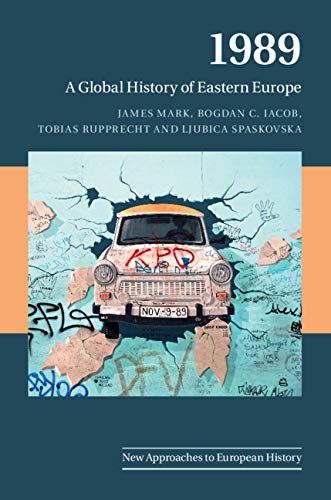 1989: A Global History of Eastern Europe
1989: A Global History of Eastern Europe
By James Mark, Bogdan C. Iacob, Tobias Rupprecht and Ljubica Spaskovska
Publisher: Cambridge University Press
Recommended by Nick Ostrum
1989: A Global History of Eastern Europe offers a nuanced and sobering account of the global context of the fall of the Eastern Bloc and its role in the construction of post-Cold War Europe. In doing so, it pokes holes in the iron curtain myth, identifying not only growing East-West contacts over the last two decades of Soviet communism but also the complex network of connections that had developed between the Eastern Bloc and the Third World over the same period. Notably, because of this, significant portions of the developing world, as well as within Eastern Europe itself, viewed the events of 1989 with great skepticism. Would the disintegration of the Soviet sphere spell the end of these relations? Would it birth a larger, stronger, and westernized Europe, eager to create a new neocolonial sphere of hegemony in the formerly Soviet and non-aligned world?
The end of communism largely meant the marketization of formerly communist economies and the integration of formerly communist states into western-led associations such as NATO and the EU. As Mark, Iacob, Rupprecht, and Spaskovska argue, however, this did not necessarily translate into the thorough liberalization of Eastern Europe, at least over the long term. Although many countries took steps to conform to EU requirements regarding civil rights, democratization, and economic decentralization, many backtracked on these policies soon after gaining membership. Some looked to models of authoritarian neoliberalism in Augusto Pinochet, Syngman Rhee, and Deng Xiaoping. Especially in the wake of the 2008 world economic recession, some also pivoted towards Vladimir Putin. Although the authors offer some hope for the continued relevance of liberalism even amidst recent trends toward ethnocentric nationalism and economic protectionism (which, admittedly, is hardly foreign to the liberal/neoliberal West), contemporary Eastern Europe nevertheless remains an altogether different place than the triumphalist Western European and American narratives envisioned. This book, in other words, makes a unique and necessary contribution not just to the historiography of the revolutions of 1989, but also to our understanding of the rightward drift in contemporary Eastern Europe.
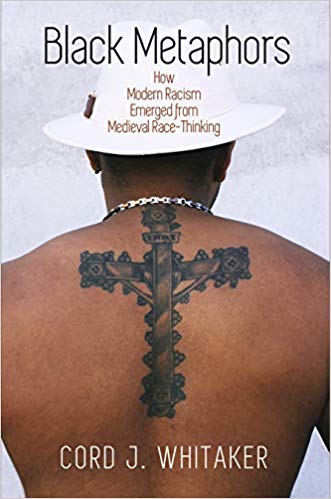 Black Metaphors: How Modern Racism Emerged from Medieval Race-Thinking
Black Metaphors: How Modern Racism Emerged from Medieval Race-Thinking
By Cord J. Whitaker
Publisher: University of Pennsylvania Press
Recommended by Louie Dean Valencia-García
Cord Whitaker’s Black Metaphors: How Modern Racism Emerged from Medieval Race-Thinking places itself not only firmly in the context of current debates around questions of race in the field of medieval studies, but it shows why those debates are so profoundly important to those conversations in society writ large. Acknowledging the pitfalls of traversing centuries, in his analysis of blackness, Whitaker traces the concept and its association with sinfulness and ultimately the construction of racism today. Further, Whitaker aptly places this book in the context of “Black Lives Matters” and the global rise of far right, showing how questions around the Middle Ages are urgent ones that must be addressed if we are to understand the prejudices of today’s world.
Whitaker first looks at the ways in which blackness is used in the fourteenth-century English romance King of Tars, then he turns his analysis to medieval “contrariety” in rhetoric and grammar—the creation of black-and-white binaries—, and follows with a study of Chaucer’s Miller’s Tale. He argues that “once whiteness is made normative, as it usually is in modern Western racial ideology, whiteness appears to inhere within itself alone.” In contrast, “Blackness appears to embody difference—singularity.” How this came to be is significantly more complex, but Whitaker’s clear writing helps the non-specialist and specialist alike to understand both the medieval particularities and the contemporary implications. Whitaker’s chapter analyzing how the rhetorical device known as “enthymeme” highlights “some information while obscuring other data” to perpetuate biases is particularly poignant. It particularly marks the shift in the work, moving to tie together medieval race thinking to the modern-day world. This book is important because it gives readers specific examples of how race-thinking centuries ago has come to affect the world we live in today. This book is essential reading for scholars of Europe of any period and those seeking to understand racism in the world more broadly today because of the legacy of European colonialism.
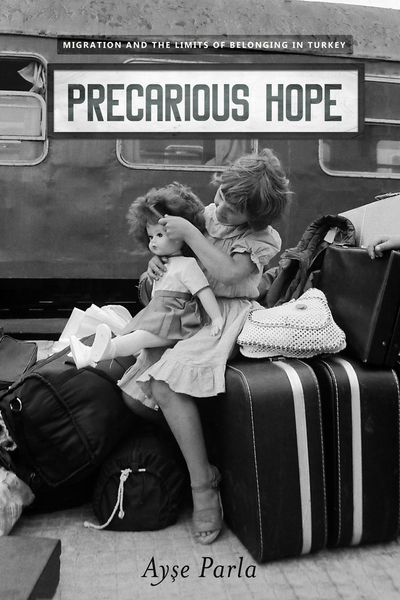
Precarious Hope: Migration and the Limits of Belonging in Turkey
By Ayşe Parla
Publisher: Stanford University Press
Recommended by Carol Ferrara
How can hope be simultaneously individual, yet collectively produced; boundless, yet subject to the structuring forces of social class and inequal distribution? In her new book, Precarious Hope: Migration and the Limits of Belonging in Turkey, Ayşe Parla explores these paradoxes through a rich ethnography of Bulgaristanli (migrants of Turkish ethnic heritage from Bulgaria) who are persisting in their struggles to gain citizenship and belonging in Turkey. Bulgaristanli are of Turkish ethnic origin, and until 1990, could gain citizenship rather easily, especially given Turkey’s history of specifically ethnonationalist immigration policies. However, shifting cultural perceptions toward the migrants in the 1980s ushered in political and legal changes that significantly changed the ease of migration between Bulgaria and Turkey for these soydaş (racial kin) of Turkey. By 2001, Bulgaristanli, while able to enter Turkey relatively easily on a tourist visa, could no longer assume the guarantee of citizenship or legalization of their work status, leaving them in precarious limbo between legality and illegality, and between borders. Yet many of them remained hopeful – expectant even – of being able to eventually earn citizenship status on the basis of their Turkish origins, clinging to possibility rather than to probability.
Rather than highlighting the most desperate situations, Parla focuses on more ordinary migrant experiences. This invites readers to think about the ways in which hope maps onto the coexistence of privilege and precarity among relatively privileged migrants, who are nonetheless still subject to fluctuating bureaucracy, politics, and the unequal structuring of opportunity. While hope is often considered a necessary and seemingly universal human survival tool, Parla’s ethnography illustrates a range of experiences with it, revealing gaps between differently positioned migrant groups, and demonstrating the ways that this universal human emotion is nonetheless mitigated by social hierarchies and power dynamics. Is our own hope structured by our social status and privilege? Does this hope gloss over and allow the perpetuation of social inequalities throughout the world? This passionate book not only offers an important humanizing anthropological account of migrant experience in Europe, but also gives us pause for reflection in terms of our own hope in an anxious era, especially in terms of migration and the perils and suffering that so often accompany it.
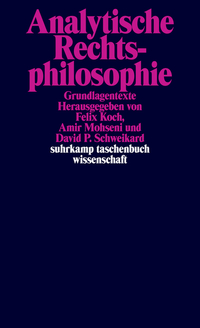 Analytische Rechtsphilosophie
Analytische Rechtsphilosophie
Edited by Felix Koch, Amir Mohseni, David Schweikard
Publisher: Suhrkamp Verlag
Recommended by Juliane K. Mendelsohn
The physicists Richard Feynman once said that “the philosophy of science is as useful to scientists as ornithology is to birds.” This is almost synonymous to the current approach taken by most German legal faculties concerning the study and, in particular, the teaching of the philosophy of law – a field in which nothing has happened in decades. While debates surrounding “law and economics,” Habermasian discourse ethics, and Robert Alexy’s principle theory of law (in fact inspired by the analytical ideas of Ronald Dworkin) have received much attention, outside of the interpretation of legal codes and a firm belief in the rule of the law, not many legal scholars or practitioners have any greater illuminating notions of what “the law is” and what it means to be “doing the law,” nor is it required of them.
This makes the arrival of Analytische Rechtsphilosophie edited by Felix Koch, Amir Mohseni, and David Schweikard – a collection of and meticulous introduction to texts belonging to the study of “jurisprudence” at the UK and US philosophy faculties (starting with HLA Hart, through Ronald Dworkin, Jules Coleman, Joseph Raz, to Leslie Green and others)– feel simultaneously novel and invigorating, as well a nostalgic. While the text presents itself as a perfect study guide (for class use or self-study) and great point of reference for years of discussions to come, it also serves a greater purpose. Mending the overstated divide between so-called continental (EU) and analytical (UK/US) philosophy, as well the divergence of how scholars of civil law on the one hand and common law on the other “think about the law.” Since civil law represents itself as a “closed system” that follows its own logic rather than the moral imagination of the common law judge, questions such as “how the law is vs. how the law ought to be”, as well as the incorporation of external moral debates, often seem more tangential, but will be as relevant as ever in the next decade since understanding and shaping the law will inevitably become far more globalized, nuanced and uncertain. While the focus of this book is purely analytical, it may even lead the legal scholar back to the shores of continental philosophy – where Kant’s star-filled nights illuminate the meanderings of the Zeitgeist and Minerva can be spotted at dusk, just before she takes her flight.
Published on January 16, 2020.




